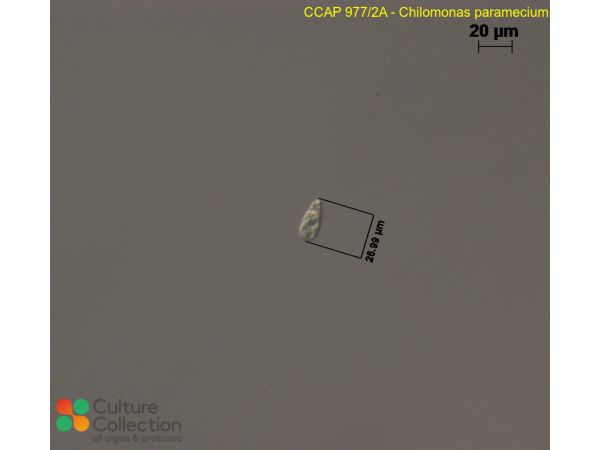References [ 16 ]
Hoef-Emden K (2005) Multiple independent losses of photosynthesis and differing evolutionary rates in the genus Cryptomonas (Cryptophyceae): Combined phylogenetic analyses of DNA sequences of the nuclear and the nucleomorph ribosomal operons. Journal of Molecular Evolution 60: 183-195.
Hoef-Emden K (2007) Revision of the genus Cryptomonas (Cryptophyceae) II: incongruencies between the classical morphospecies concept and molecular phylogeny in smaller pyrenoid-less cells. Phycologia 46: 402-428.
Scherwass A, Fischer Y & Arndt H (2005) Detritus as a potential food source for protozoans: utilisation of fine particulate plant detritus by a heterotrophic flagellate, Chilamonas paramecium, and a ciliate, Tetrahymena pyriformis. Aquatic Toxicology 39(4): 439-445.
Wylezich C, Nies G, Mylnikov AP, Tautz D & Arndt H (2010) An evaluation of the use of the LSU rRNA D1-D5 domain for DNA-based taxonomy of eukaryotic protists. Protist 161: 342-352.
Hoef-Emden K & Melkonian M (2003) Revision of the genus Cryptomonas (Cryptophyceae): A combination of molecular phylogeny and morphology provides insights into a long-hidden dimorphism. Protist 154: 371-409.
Donaher N, Tanifuji G, Onodera NT, Malfatti SA, Chain PSG, Hara Y & Archibald JM (2010) The complete plastid genome sequence of the secondarily nonphotosynthetic alga Cryptomonas paramecium: Reduction, compaction, and accelerated evolutionary rate. Genome Biology and Evolution 1: 439-448.
Cavalier-Smith T, Allsopp MTEP & Chao EE (1994) Chimeric conundra: Are nucleomorphs and chromists monophyletic or polyphyletic? PNAS 91: 11368-11372.
DOI: none
Tanifuji G, Onodera NT, Wheeler TJ, Dlutek M, Donaher N & Archibald JM (2010) Complete nucleomorph genome sequence of the nonphotosynthetic alga Cryptomonas paramecium reveals a core nucleomorph gene set. Genome Biology and Evolution 3: 44-54.
Reeb VC, Peglar MT, Yoon HS, Bai JR, Wu M, Shiu P, Grafenberg JL, Reyes-Prieto A, Rummele SE, Gross J & Bhattacharya D (2009) Interrelationships of chromalveolates within a broadly sampled tree of photosynthetic protists. Molecular Phylogenetics and Evolution 53: 202-211.
Friman VP, Dupont A, Bass D, Murrell DJ & Bell T (2015) Relative importance of evolutionary dynamics depends on the composition of microbial predator-prey community. The ISME Journal 10: 1352-1362.
Lane CE, Khan H, MacKinnon M, Fong A, Theophilou S & Archibald JM (2006) Insight into the diversity and evolution of the cryptomonad nucleomorph genome. Molecular Biology and Evolution 23: 856-865.
Friman VP, Guzman LM, Reuman DC & Bell T (2015) Bacterial adaptation to sublethal antibiotic gradiants can change the ecological properties of multitrophic microbial communities. Proceedings of the Royal Society of London Series B 282: 20142920.
Vaerewijck MJM, Sabbe K, Baré J, Spengler H-P, Favoreel HW & Houf K (2012) Assessment of the efficacy of benzalkonium chloride and sodium hypochlorite against Acanthamoeba polyphaga and Tetrahymena spp. Journal of Food Protection 75: 541-546.
Rockwell NC & Lagarias JC (2017) Ferredoxin-dependent bilin reductases in eukaryotic algae: Ubiquity and diversity. Journal of Plant Physiology -: -.
Kim JI, Moore CE, Archibald JM, Bhattacharya D, Yi G, Yoon HS & Shin W (2017) Evolutionary Dynamics of Cryptophyte Plastid Genomes Genome Biology and Evolution 9: 1859-1872.
Yang EC, Noh JH, Kim S & Choi DH (2020) Plastid-encoded gene comparison reveals usefulness of atpB, psaA, and rbcL for identification and phylogeny of plastid-containing cryptophyte clades Phycologia -: -.

